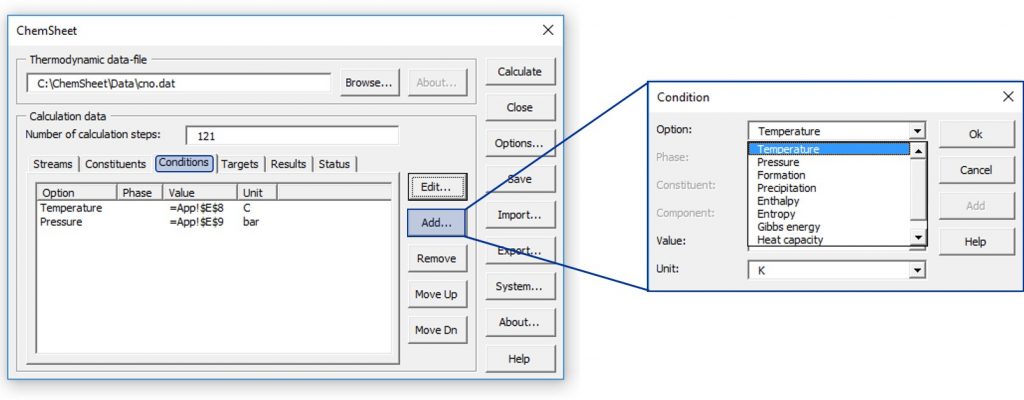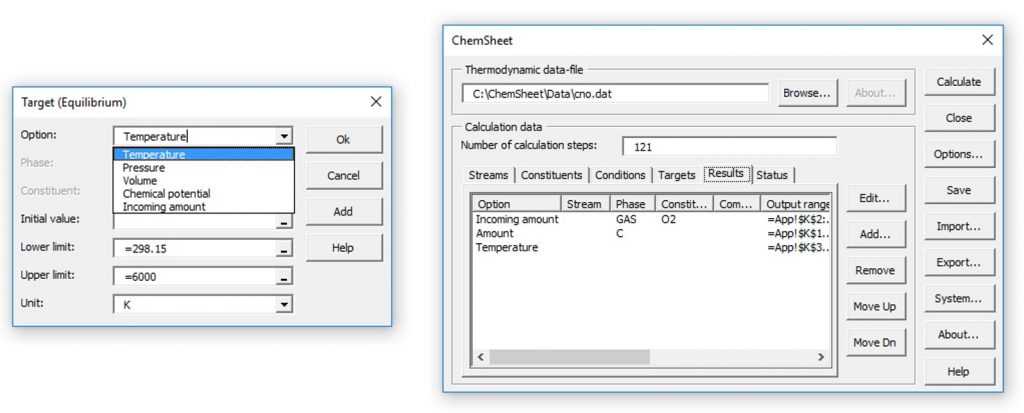ChemSheet is easy use and allows you to combine thermochemical calculations with physical modelling.
Easy to learn, easy to use analytical tool
You may use the powerful calculation capabilities of ChemSheet to investigate a wide range of technical problems and save hours of work when compared to conventional simulation programs or experimental work.
Setting up a model can be done easily using the ChemSheet Model Wizard. The model input is shown here for the application example on combustion and soot formation. First, a thermodynamic data file has to selected. Then, the incoming streams and their constituents have to be defined.

Next, the calculation conditions have to be set, which is here done by defining temperature and pressure, however, other conditions could have been set just as well, e.g. heat transfer (enthalpy) or a formation or precipitation target.

Target calculations to determine e.g. adiabatic reaction temperatures or solubility limits can be defined as well. Finally, it has to be specified what output should be written.

The ChemSheet Model Wizard guides you through the process of model setup, making ChemSheet easy to use even without sophisticated programming knowledge!
Combining Thermochemistry and Physical Modelling
The input for the thermochemical calculation in ChemApp is defined in an Excel worksheet where the output is also written. This allows you to combine thermochemical calculations with physical modelling, e.g. taking into account heat transfer or reaction kinetics. By introducing a step variable you can establish a firm link between both models, using iteratively results from one model as input for the other model. Please have a look at the application examples!

Figure 1. Chemsheet works as an add-in of general thermodynamics to Microsoft Excel.
